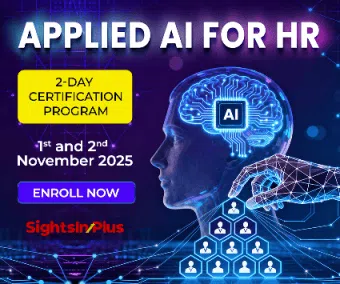Learning & Development (L&D) has become a strategic imperative for organizations aiming to stay competitive and future-proof their workforce.
This year marks a new era for L&D, shaped by technological innovation, changing employee expectations, and the urgent need to close skill gaps.
Here’s a comprehensive look at the latest trends and statistics that are defining L&D in 2025.
The eLearning Boom: The global eLearning market is experiencing explosive growth, projected to reach $325 billion by 2025 and expected to soar to $462.6 billion by 2027, representing a compound annual growth rate (CAGR) of over 13%.
- Significantly, eLearning is not just more accessible; it’s also more effective.
- Studies show that digital learning retention rates range from 25–60%, compared to just 8–10% for traditional classroom instruction.
- This leap in effectiveness is fueling further investment, as every $1 spent on online training yields approximately $30 in increased productivity, according to IBM.
Mobile Learning: Mobile learning (mLearning) is a rapidly expanding global market, valued at approximately $110.42 billion in 2025 and projected to reach $340.93 billion by 2029, growing at a CAGR of 32.6%. Increased mobile device penetration, rising internet access, and demand for flexible, personalized learning are key drivers.
- 70% of learners report higher motivation when training on a mobile device.
- Mobile learning improves retention rates by 45% over traditional methods.
- 94% of Gen Z employees use smartphones for educational purposes.
Microlearning: Microlearning delivers content in short, focused modules, fitting seamlessly into busy schedules and modern attention spans. Microlearning also reduces training time by 40–60%, enabling employees to learn efficiently during natural breaks in their workday.
- Knowledge retention increases by 25–60% with microlearning.
- Completion rates for microlearning courses average 80%, compared to 20% for traditional eLearning.
- Organizations using microlearning report a 130% boost in employee engagement and productivity.
Artificial Intelligence: AI is revolutionizing L&D by enabling hyper-personalized learning journeys, automating content creation, and providing actionable analytics. Despite these advances, only 38% of companies currently offer AI-related training.
- 30% of L&D teams already use AI-powered tools, with 91% planning to increase usage.
- 46% of organizations not yet using AI intend to adopt it within a year.
- AI-personalized learning paths increase efficiency by 57% and yield 20–30% cost savings in L&D operations.
Gamification: Applying game mechanics like points, badges, and leaderboards has become mainstream in corporate learning. Advanced gamification now includes AR/VR-based simulations and team-based challenges, making learning both effective and enjoyable.
- 70% of Global 2000 companies use gamification in training.
- Gamified experiences increase employee engagement by up to 48% and boost course completion rates to 90% (versus 25% for non-gamified courses).
- 89% of employees say gamification makes them feel more productive, and 83% report higher motivation.
Customer Education: Customer education programs are proving to be a smart investment:
- 86% of companies see positive ROI from customer education.
- Customer education leads to a 16% decrease in support tickets and a 38% increase in product adoption.
- 95% of customer education teams plan to leverage AI for scalable, personalized learning content in the next 12–18 months.
Strategic Priorities for L&D in 2025
With 61% of L&D professionals citing skill gap closure as their top priority, organizations align learning initiatives with business outcomes, use data to demonstrate ROI, and focus on leadership, soft skills, and role-specific training.
As AI, microlearning, and mobile-first strategies become ingrained, L&D’s role expands from upskilling employees to educating customers and driving measurable business results. The message is clear that in 2025, learning is not just a support function but a core driver of organizational success.
Prajjo’s LMS and LDS solutions support this strategic direction by delivering structured, performance-driven learning paths and personalized development content.
This solution enables organizations to close critical skill gaps with integrated analytics and measurable learning impact while directly contributing to business growth.
Note: We are also on WhatsApp, LinkedIn, Google News, and YouTube, to get the latest news updates. Subscribe to our Channels. WhatsApp– Click Here, Google News– Click Here, YouTube – Click Here, and LinkedIn– Click Here.



